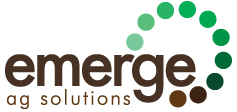There is usually value in seed treatment, depending on the crop, the environmental conditions and how intensive the farm management system. The best seed, together with a comprehensive seed treatment strategy, will usually ensure a crop gets a quick, even start without having to cope with avoidable stressors.
The benefits of seed treatments include:
- Protecting the seed from seed-borne & soil-borne diseases, like:
- Root rot
- Blunt
- Smut
- Seedling blight
- Protecting the seed from insect damage
- Wireworms, etc.
- Improved seedling vigour
- Earlier, more even emergence
- Important when farmers are trying to get the crop into the ground as soon as possible in the spring
- Better developed root systems
- Better tolerance to abiotic stressors
- Frost
- Drought
- Flooding
- More potential for increased yield
2015 is shaping up to be an interesting year from the get-go. The crop endured a tough harvest in 2014. In some areas of Alberta, the early frost and snow wreaked havoc on seed quality. In Saskatchewan and Manitoba, fusarium took a hefty toll on quality. Germination and vigour are below average, especially in durum.
If a grower is planning on using his own bin-run seed it should be tested for germination and vigour and subjected to a fungal scan. The germination should be tested again just prior to seeding. In a year like 2013, where harvest conditions were ideal and seed went into storage dry, germination remained high until spring and beyond. Seed from 2014 will not be able to maintain its germination to the same extent.
“Seed treatment is a great insurance,” says Mitchell Japp, cereal crops provincial specialist with Saskatchewan Agriculture. “While a seed treatment will not ‘fix’ a seed lot with glyphosate or frost damage, for example, it will provide some protection against soil-borne diseases.” In turn, by protecting the seed, the farmer can expect good emergence and plant establishment, key to a good crop.
Your local agronomist can be very helpful in determining what seed treatments are suitable by crop and by geography. Some seed labs will also assist the farmer in deciding on a seed treatment by testing in the lab following a fungal scan.
Seed treatment can also be used to control insects that impact seed germination and seedling development. Many offerings are now in combination formulations of both.
Coverage of the seed with the seed treatment product is extremely important. A decade or more ago, seed treatments were glycol based, penetrated the seed coat, and attacked the disease even before seeding. Now, water-based seed treatments do not penetrate the seed coat and need contact with the disease to control it. The disease is not controlled until it, and the seed, start to grow. If even a spot on the seed is not treated it provides an avenue for the disease to successfully grow and establish itself and cause damage.
Photo credit
Well-treated seed (left) and poorly treated seed (right). Note the difference in coverage of the seed treatment product.
Courtesy of Saskatchewan Ministry of Agriculture.







Leave A Comment